
“Messing about in boats”: four Cambridge University Cruising Club logbooks, 1888-1902
Post by Sam Evans (Assistant Archivist, Archives & Modern Manuscripts)
The Cambridge University Cruising Club was founded on 20 May 1893 ‘to encourage amateur sailing, cruising and racing, to provide members with opportunities for instruction in nautical matters, and to promote discussion thereof’. The University Archives hold records of the Club from 1893 onwards, including a set of logbooks from cruises undertaken by members of the club. In 2023, four logbooks dated between 1888 and 1902 were transferred to the archives (UA/SOC.103/5/4/1a-d).
These logbooks were written and illustrated by Aubrey Stewart (1844-1918), a life member of the club from 1899. The son of a Cambridge clergyman, he was born in Ely and went to Harrow and then Trinity College, Cambridge, where, after distinguishing himself in the Classical Tripos (Latin and Greek), he became a fellow in 1870. He was the secretary of the Royal Watercolour Society, and in 1899 married Lilias Augusta Wright (1861-1908). The couple lived briefly in London, then in Ipswich.
The first logbook, ‘Some account of the cruise of the Plover in 1888’ (UA/SOC.103/5/4/1a) is the smallest of the set, with a black cover. Stewart added pen and ink sketches and hand-drawn maps, photographs and clippings. He refers to himself by his monogram, AS, and to his companions mostly by their initials. The narrative sometimes sounds rather like Jerome K. Jerome’s Three Men in a Boat. Here ‘N’, who happens to be Senior Proctor, has to return to Cambridge on official business (p. 10):
The next job was to set N ashore, which was no small operation. AS and Hd. sailed and sculled the dinghy with N, his portmanteau, and bundle of rugs &c up to Kingsbridge. We were aground most of the way, and had to fumble our way amid shoals and mudbanks, for the flood-tide was only just beginning to make up. About a mile below the town of Kingsbridge [Devon] N and H had to land, and carry his heavy portmanteau slung on a rope between them. AS remained in the boat, and as the tide rose paddled her up to a point nearer the town. Here he was at length joined by Hd., who was discontented. They had a frightful labour, and N had tumbled down in a puddle and splashed himself and Hd. all over: besides which they had only just caught the coach.
The second logbook, Log of the Plover, 1890, is a large, red-leather-bound book, with thick, gilt-edged pages; inside, too, it is the most magnificent of the three, with a watercolour frontispiece and illuminated and historiated initials, like a medieval manuscript. (Illuminated: using gold and silver pigments; historiated: with recognisable scenes or persons painted within the initials.) The initials show not only scenes passed on the cruise, but also notable events, such as the marathon pancake-making session.
A. is not well, and attributes his sufferings to overwork in cooking pancakes on Monday night. He began a course of hot linseed poultices on his back, and continued to apply them day and night for more than a week.
Spaces at the ends of the paragraphs are filled with ducks, ornamental chains, and on one occasion, after a long-hoped-for crab tea, silver teapots and crabs (see the head of this post, from UA/SOC.103/5/4/1b). Photographs, cuttings, and other documents are still glued in. The third and fourth logbooks, ‘Log of the cutter yacht Augusta during the summer of 1899’ (UA/SOC.103/5/4/1c), and ‘Log of the yacht Augusta, 1901 and 1902’ (UA/SOC.103/5/4/1d) are more modest affairs, still with the beautiful calligraphy and coloured drawings, still with the photographs, cuttings, tickets and bills: but the text shows a slight difference in tone: and note the linked initials A and L in the frontispiece to the 1899 volume.
The poem mentions, unromantically, ‘the garlick Lil eats with her steaks’, and ‘the horrible smell it makes’ as well as ‘Lil’s uvula, making her ill’. In the text Stewart generally gives up referring to himself by his initials, referring instead mostly to ‘L. and I’. Evidently, he is sailing with his wife and a hired crew. It gets off to a bad start: the first thing L does is lose a brooch, which is recovered the next day ‘by prompt application to the police’. Then ‘no door on board will either open or shut, neither will the w.c. work. Got a carpenter and a plumber’. Over a fortnight is spent trying to get a rudder cap to fit. However, eventually they get under way, and between early June and 20 September travel from Southampton to Portsmouth, Cowes, Swanage, Weymouth, Exmouth, Dartmouth, Salcombe, Plymouth, Fowey, back to Southampton, then Newhaven, Dungeness, Ramsgate, and back to Southampton again. The log continues with an account of their travels in 1900, travelling from Southampton to Cockham Wood, on the Medway. In 1901, between May and August, Stewart and L again sailed along the south coast, after spending some time in Southampton, where L scoured the deck with lemons and had her uncomfortable mattress replaced. In Salcombe, ‘L brought a KITTEN on board!’. Impossible to tell whether the capital letters and exclamation point signify delight or horror, but after a few days the kitten, though ‘quite at home’, was sent in a basket to London. In 1902, they went on board in June, but the weather was very wet and L caught cold. They made their usual voyage along the south coast, sightseeing as they went.
These logbooks, with their wit and artistry, no less than the wealth of social history encapsulated in newspaper cuttings, receipts, letters and photographs, are a wonderful source on the entertainments of the leisured class in the late Victorian period.
Sources
John and J.A. Venn, Alumni Cantabrigienses from the earliest times to 1900. 10 vols. Cambridge: Cambridge University Press, 1922-54. Available online.

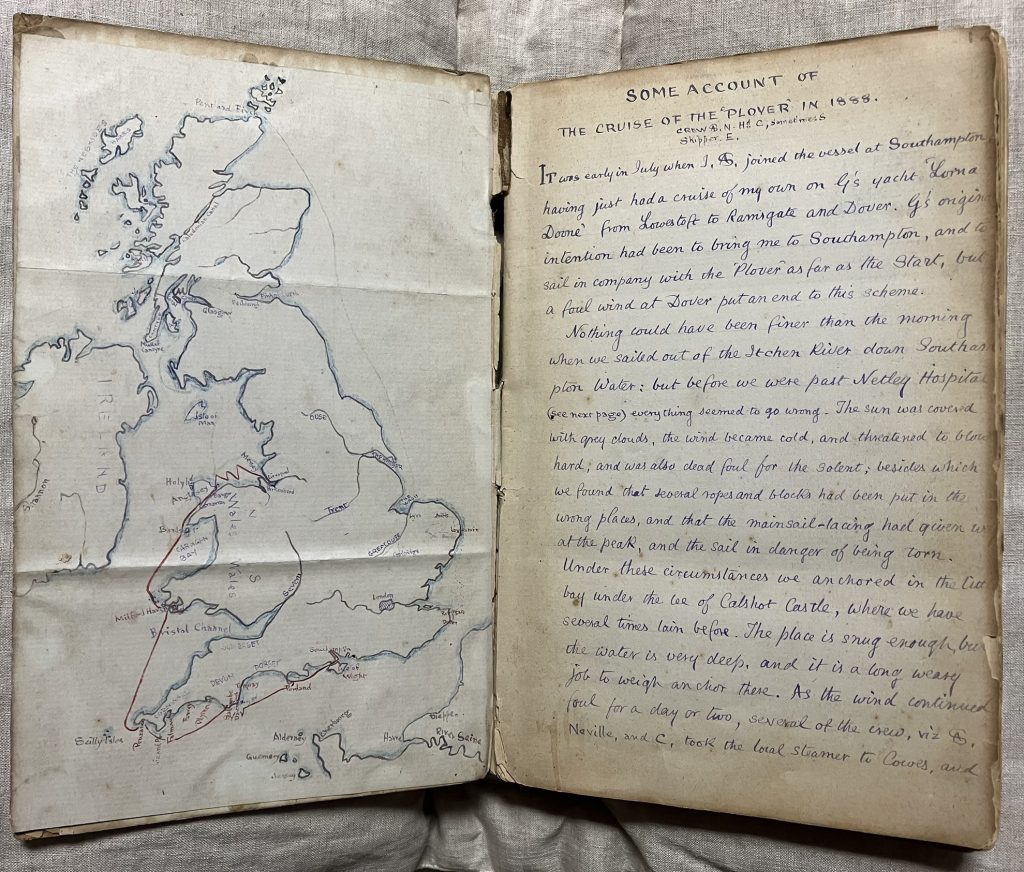
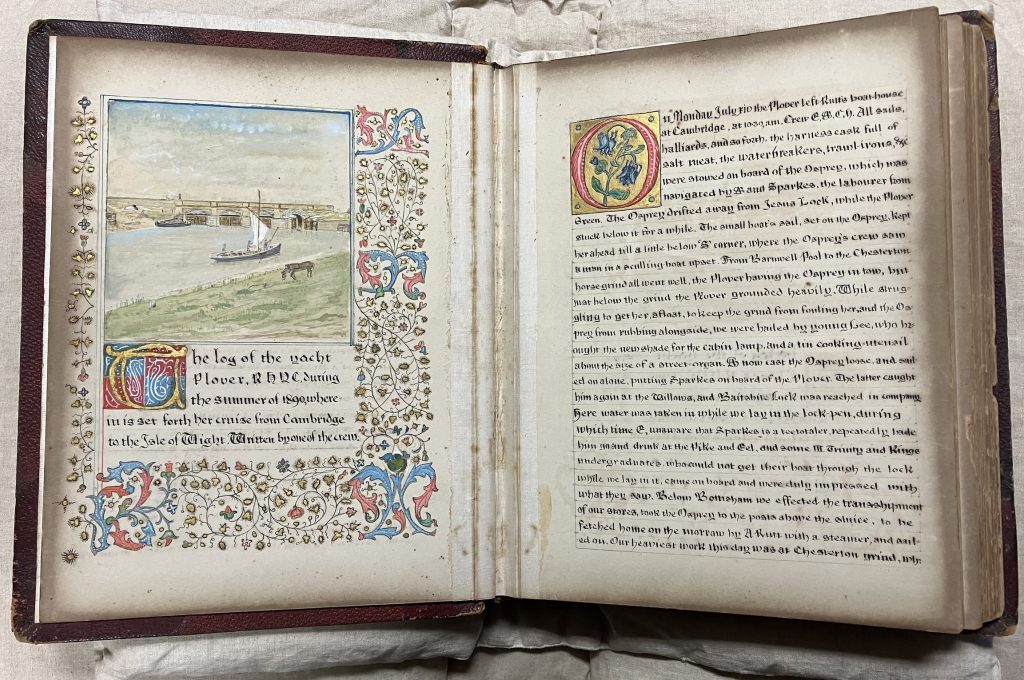
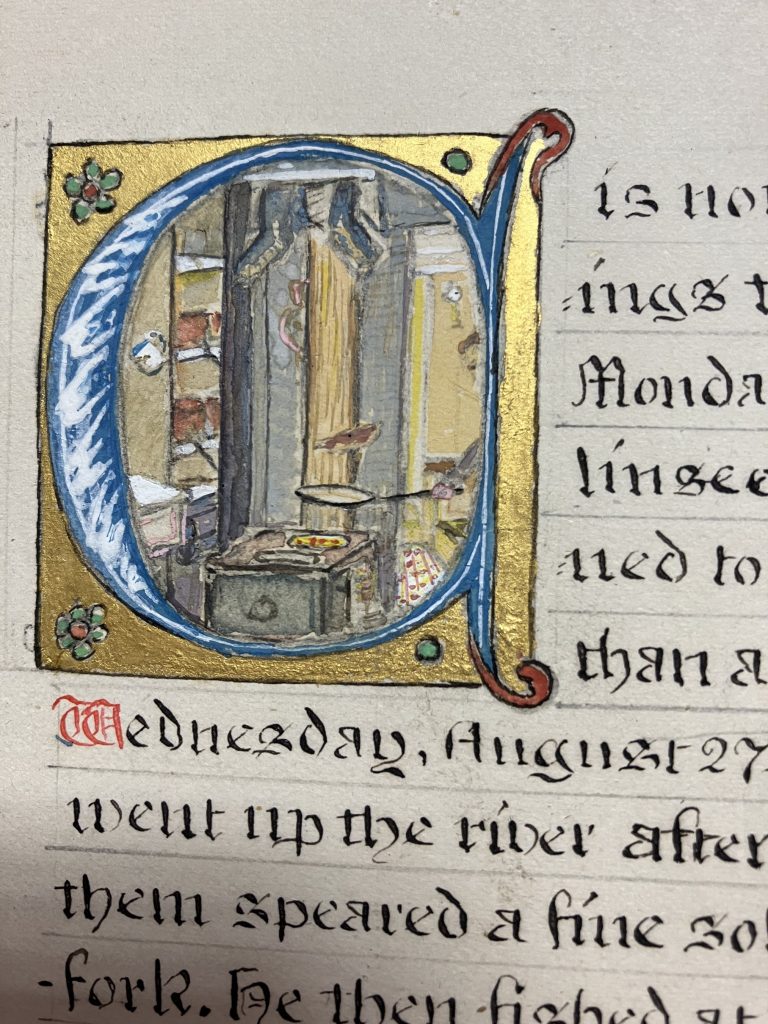
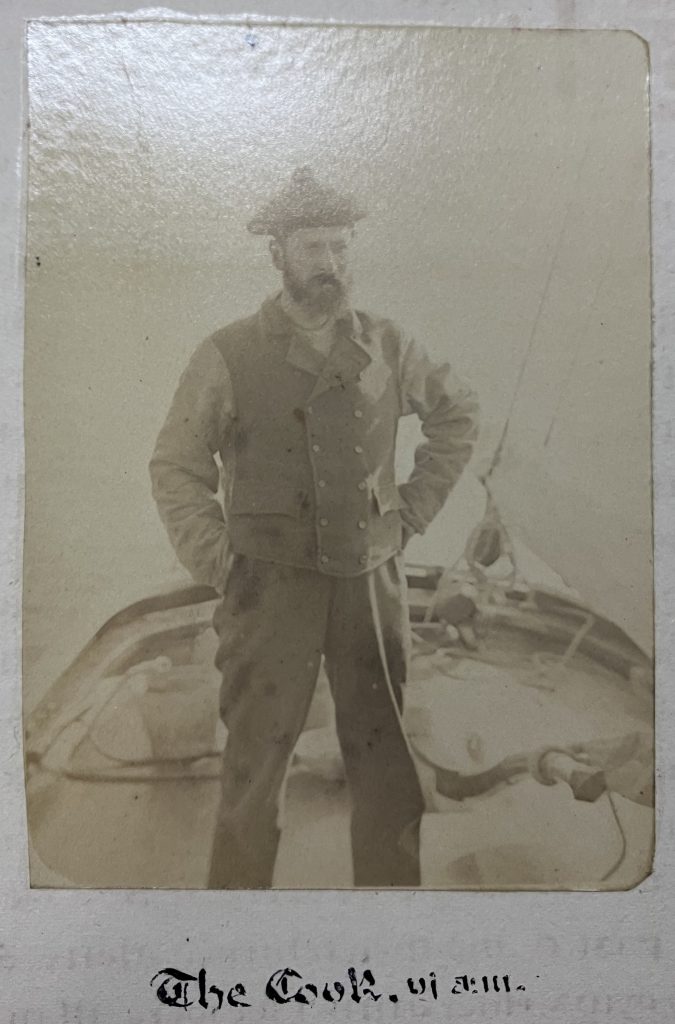
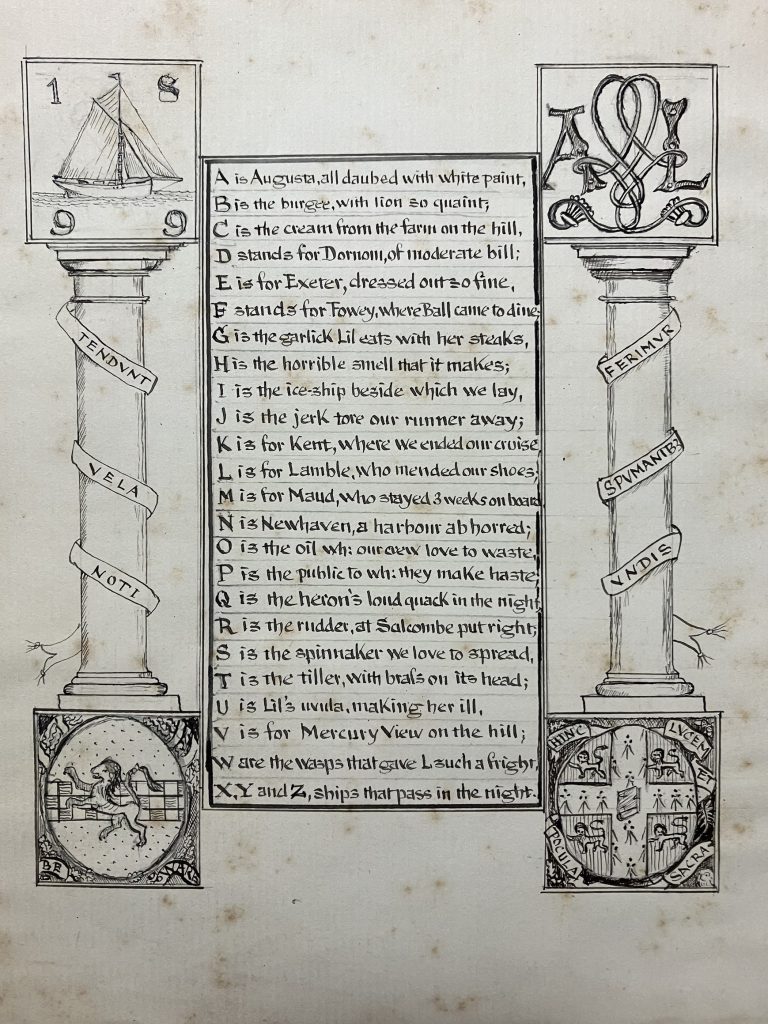
Dear Archivists
I was overjoyed to find this! Lilias Augusta Stewart, nee Wright, was my great great aunt. The manuscripts and illustrations are wonderful. I would have loved to have browsed through this. Do I take it the cook on the Plover was Aubrey?
Is there a photo of Lilias? Coincidently, I have just received from the GRO a copy of Lilias’ death certificate. She died of cervical cancer on 28 December 1908.
My greatest thanks to the Archivists for making this available on-line.
Kind regards
Amanda Burton
East Sussex
Many thanks for this Amanda! Glad it was of interest. I’ll message you by email separately shortly. Best wishes, Liam Sims, Rare Books Specialist.